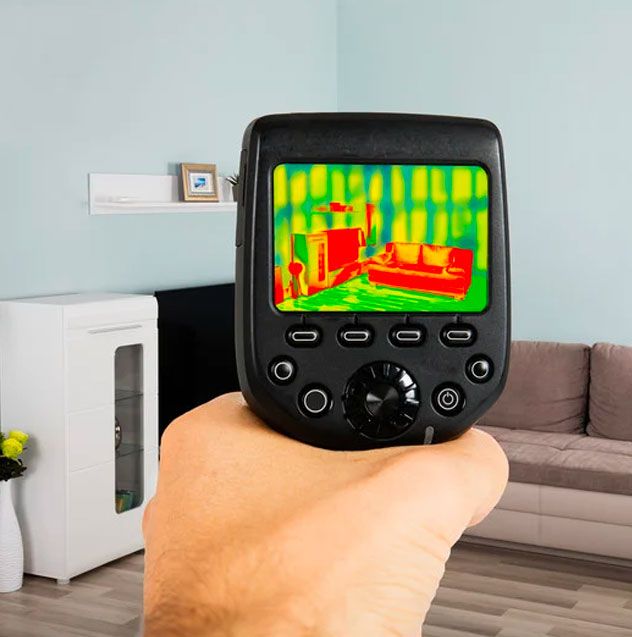Amazinghazardremoval.com Mold Testing Fairfield Fundamentals Explained
What Does Amazinghazardremoval.com Mold Testing Fairfield Mean?
Table of ContentsAll About Amazinghazardremoval.com Mold Testing Fairfield7 Easy Facts About Amazinghazardremoval.com Mold Testing Fairfield ShownNot known Facts About Amazinghazardremoval.com Mold Testing FairfieldThe Single Strategy To Use For Amazinghazardremoval.com Mold Testing FairfieldAmazinghazardremoval.com Mold Testing Fairfield - TruthsThe Facts About Amazinghazardremoval.com Mold Testing Fairfield Revealed
Unless you're cautious, you might disturb the mold and mildew development and launch spores throughout your structure. At Paul Sakson Environmental, we supply specialist mold and mildew screening and removal solutions to household, industrial, and kid treatment centers across New Jersey.With us, you won't have to lose sleep over how your indoor air quality is impacting your liked ones. For additional information, contact us today!.
1.1 The function of this criterion is to offer standard treatments to be utilized for a mold and mildew assessment. There are 2 types of mold evaluations explained in the IAC2 Mold Evaluation Standards of Practice: (1) Total Mold Inspection (Area 2.0)( 2) Restricted Mold Inspection (Area 3.0) 1.2 Unless the assessor and customer consent to a limitation of the examination, the examination will certainly be done at the primary structure and connected auto parking framework.
About Amazinghazardremoval.com Mold Testing Fairfield
1.3 A mold and mildew examination stands for the day of the evaluation and can not forecast future mold development. Because problems conducive to mold development in a building can vary substantially in time, the outcomes of a mold and mildew evaluation (assessment and tasting) can only be trusted for the time at which the examination was conducted.

The limited mold and mildew examination does not include an aesthetic exam of the entire building, yet is restricted to a details area of the building identified and defined by the assessor. Consequently, dampness invasion, water damage, stuffy odors, evident mold development, or conditions for mold and mildew development in various other areas of the structure may not be evaluated.
The roofing system water drainage system, including rain gutters and downspouts. The inspector is not required to: A. Walk on any kind of roofing system surface area. AmazingHazardRemoval.com Mold Testing Fairfield. C. Perform a water test.
Facts About Amazinghazardremoval.com Mold Testing Fairfield Revealed
The cladding, flashing and trim. B. Outside doors, windows, decks, stoops, actions, staircases, porches, railings, eaves, soffits and fascias. C. The outside grading bordering the structure border. D. Things that penetrate the exterior siding or covering materials. II. The inspector is not required to: A. Inspect underground drainage systems. B.
Inspect defects not related to mold development or dampness breach. 4.3 Cellar, Foundation, Crawlspace, and Structure I. The examiner shall inspect: A. The structure, cellar, or crawlspace including ventilation. B. For moisture breach II. The assessor is not needed to: A. Operate sump pumps with unattainable floats. B. Inspect for architectural defects not connected to mold and mildew growth or moisture breach.
What Does Amazinghazardremoval.com Mold Testing Fairfield Mean?
The assessor shall check: A. The air handler, flowing follower, and air filter. B. The condensate pump. C. Readily noticeable ductwork. D. Rep number of supply and return air signs up. E. The main humidifier. F. The central air system. II. The inspector is not needed to: A. Evaluate the air conditioning coil otherwise readily obtainable.
Inspect the condensate pan if not easily easily accessible. C. Examination the efficiency or effectiveness of the cooling and heating system. D. Inspect the inside of ductwork system. 4.5 Pipes I. The inspector shall evaluate: A. The readily visible main water line. B. The readily visible water lines. C. The readily visible drain, waste, and vent pipes.
Warm water source. The assessor is not required to: A. Examination the showers and tubs by loading them with waterB. C. Inspect for pipes flaws that are not connected to mold development or dampness intrusion.
The assessor will inspect: A. Insulation. B. Read Full Report Air flow of attic room areas. C. Framing and sheathing. II. The assessor is not needed to: A. To move, touch, or disturb insulation. B. Inspect for vapor retarders. C. Break or otherwise harm the surface coating or climate seal on or around gain access to panels and covers.
Facts About Amazinghazardremoval.com Mold Testing Fairfield Uncovered
The inspector shall check: A. The wall surfaces, ceilings, floorings, doors and windows. B. The air flow in the cooking area, bathrooms and washing. C. Whole-house air flow fans II. The examiner is not called for to: A. Inspect for interior problems that are not connected to mold growth or dampness breach. look at these guys 4.8 Moisture, Moisture, and Temperature Level I.

The focus of mold and mildew inside a home should not be greater than the concentration of mold and mildew exterior. Mold spores in the air being tasted can differ significantly in relation to the life cycle of the mold and mildew, atmospheric and ecological problems, and the quantity of ventilation.
The Ultimate Guide To Amazinghazardremoval.com Mold Testing Fairfield
Air sampling might be essential if the mold growth is thought (for example, mildewy smells), yet can not be recognized by an aesthetic exam. The objective of such air tasting is to determine the location and/or extent of mold contamination as well as an easy confirmation that mold growth exists someplace in the structure.